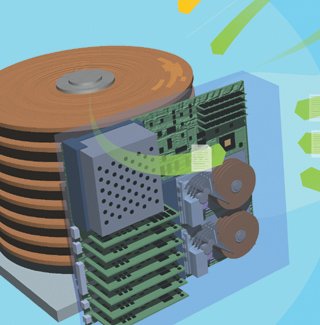Chapter 38. How Music Sharing and File Sharing Work
| Every once in a while a new feature or application takes the Internet by storm and not only changes the way many people use the Internet, but, at times, even changes the world beyond the Internet's borders. Several years ago that's what music-sharing software did. Not only did it change the way that many people used the Internet, but it also threatened the multibillion dollar music industry. Music-sharing software forever changed the way people thought of and listened to music. It did all this by putting into effect a very simple idealet people share their music with each other over the Internet. Despite all the hype, technology, and lawsuits, that's what it all comes down to. People can make digital copies of their CDs by using a piece of ripping software that turns CD tracks into digital files that can be played on a computermost commonly files in the .mp3 music format. Music-sharing and file sharing software aren't rippers. Instead, they let people find music and other files in digital format by searching through the music collections of thousands of other people. When someone finds a song he wants, he can download it to his computer from another person. Then he can listen to that song on his computer by transferring it to an MP3 player and listening to it there, or burning it onto a CD and listening to the song in a CD player. The music industry cried "Foul!" and brought the original file-sharing software, Napster, to court on copyright violations. The court cases dragged on for a while, but ultimately Napster lost and was put out of business. It may resurface as a legal, for-pay music-sharing service at some point. But despite the lawsuits, the genie is out of the bottle. Other software and file-sharing networks enable people to do the same thing. This kind of technology, which enables people to share files directly with one another, is called peer-to-peer. Peer-to-peer has gone far beyond allowing people to share musicpeople can share any kind of file from spreadsheets to movies. The BitTorrent peer-to-peer network, for example, is often used to share movies and entire CDs. A whole new kind of application has sprung up in Napster's wake: business peer-to-peer software. The most notable example is Microsoft-owned Groove software that enables people in corporations to create their own private workspace where they can share files, messages, and software. Multibillion dollar corporations have already signed on and are using the software. In addition, businesses also use BitTorrent as a way to more efficiently distribute software. So ironically, a technology that started as guerilla music-sharing software might find fruition as a corporate mainstay. |
EAN: 2147483647
Pages: 223
- Measuring and Managing E-Business Initiatives Through the Balanced Scorecard
- Measuring ROI in E-Commerce Applications: Analysis to Action
- Technical Issues Related to IT Governance Tactics: Product Metrics, Measurements and Process Control
- Governing Information Technology Through COBIT
- Governance in IT Outsourcing Partnerships
- The ROI of Lean Six Sigma for Services
- Success Story #1 Lockheed Martin Creating a New Legacy
- Seeing Services Through Your Customers Eyes-Becoming a customer-centered organization
- Success Story #4 Stanford Hospital and Clinics At the forefront of the quality revolution
- Using DMAIC to Improve Service Processes
